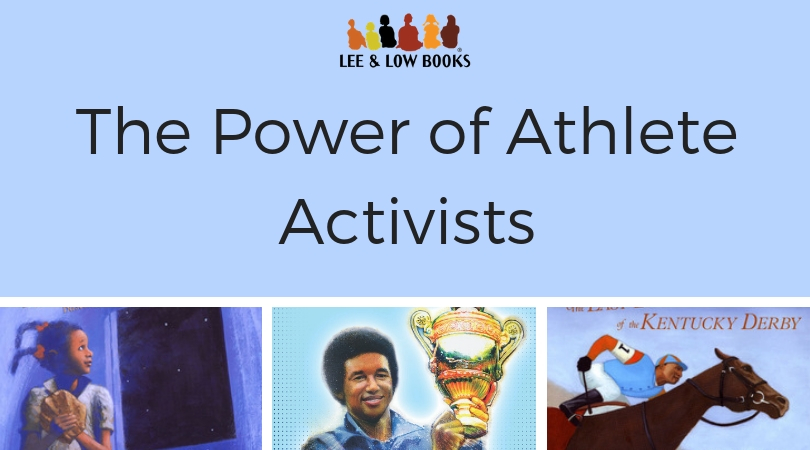Athletes have the power and ability to inspire social action, even though they may face criticism that their work should be “left on the field.” Colin Kaepernick, the former San Francisco 49ers quarterback, began #takeaknee by kneeling for the national anthem during an NFL football game in 2017. When people questioned him about his intentions, he stated, “I am not going to stand up to show pride in a country that oppresses black people and people of color…”.
Since then, he has used his platform to bring attention to police brutality and racial inequality, despite the backlash from the NFL and other organizations trying to stop him from doing this important work.
Students that you work with may have questions about Kaepernick’s influence and mission. Teaching Tolerance has a lesson plan that approaches how to talk about Colin Kaepernick in more depth with students in your classroom, library, or other relevant setting.
 Before Kaepernick, however, there was Arthur Ashe.
Before Kaepernick, however, there was Arthur Ashe.
Arthur Ashe, one of the most venerated and esteemed tennis players of all time, was an incredible activist and pioneer for integration, anti-apartheid in South Africa, AIDS activism , and a variety of other causes. Arthur was one of the first athletes to take a public stand for what he believed in. He paved the way for future athlete activists by demonstrating through his actions that his beliefs would not be confined to the tennis court.
The new Teacher’s Guide for The Story of Tennis Champion Arthur Ashe is now available here, so take the opportunity to dive into athletes and activism with the rigorous questions and activities. Have students think critically about Arthur Ashe and Colin Kaepernick, and how athletes can have the ability to motivate others to fight against injustice.
Below are excerpted activities from the Teacher’s Guide:
- Encourage students to research other athlete activists and how they affected history, both in their sport and in society. What did they accomplish? How did they raise awareness around the particular cause that they were passionate about? Why did they become activists about this issue, and how were they perceived in their profession? Students can select one athlete and conduct a research project on that athlete and present on their findings in a variety of formats: written essay, visual presentation, a combination of both, and more. For more athlete activists, check out our list below.
- In the beginning of The Story of Tennis Champion Arthur Ashe, Arthur was not allowed to play on specific tennis courts because they were segregated. Have students research how other athletes were affected by segregation, and how it influenced their abilities to play and the development of their careers. Lee & Low title, Sixteen Years in Sixteen Seconds, showcases Olympic swimmer’s Sammy Lee’s experiences with segregation and limitations just because of his race. Students can conduct an online research study about different athletes and segregation, and then write a comparative essay in regard to Arthur’s experiences.
Lee & Low titles about athlete activists include:
Catching the Moon
Surfer of the Century
Jim Thorpe’s Bright Path
The Last Black King of the Kentucky Derby
Louis Sockalexis
Silent Star
Paul Robeson









